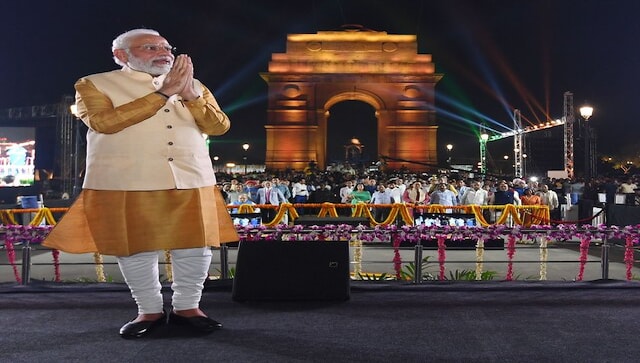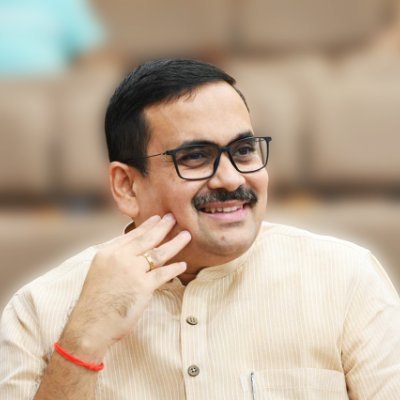For decades after Independence, Netaji’s legacy was paid perfunctory and ritual homage by successive Congress governments, whose leaders worked all the time, to dilute and to marginalise his unmatched contribution to the freedom movement
This year, 8 September, will go down as a golden day in India’s celebration of the 75th year of her Swaraj. Besides renaming “Raj Path” – Kingsway – in the heart of India’s national capital as “Kartavya Path” – the Path of Duty – Prime Minister Narendra Modi, did what no other Prime Minister of India had the temerity or conscience to do. He unveiled, having commissioned it only a year ago, a grand 28 feet statue of Netaji Subhas Chandra Bose, iconic fighter and leader of India’s freedom movement. That such a thing would or could happen one day, was beyond the realm of belief.
A wish nurtured for decades and by generations, post-independence, that of seeing Netaji stand tall at India Gate in a free India, had almost been abandoned and shelved when Prime Minister Modi undertook, in 2018, a very systematic effort to reinstate Netaji’s legacy and to offer him a nation’s gratitude. In fact, the autumn – Sarat Kāla – of 2022, India and especially West Bengal has much to rejoice. For the first time Durga Puja shall be celebrated post the conferring of the UNESCO tag for intangible heritage and for the first time in independent India’s history, Netaji Subhas Chandra Bose’s statue shall stand henceforth sentinel over India’s destiny at the junction of Kartavya Path, National War Memorial and India Gate, in the historic heart of India’s capital.
Both these deeply symbolic and significant achievements reached fruition only because of Prime Minister Modi’s insistent action towards ensuring that a comprehensive cultural recovery and decolonisation, in terms of symbols – both cultural and historic – occur, so that the consciousness of freedom and the aspiration to consolidate that freedom and to use it to spring towards a civilisational status can be achieved and realised. One of the essential actions of “Amrit Kaal”, must necessarily be the eradication of old symbols which remind us of subjection, of our past ambivalence and timidity and reinstall and re-kindle in their place, symbols and centres that indicate, instil and radiate a sense of civilisational rise.
To those overcome with emotion, the unveiling of Netaji’s statue was a moment which finally fulfilled his epic call of “Delhi Chalo” – Onward to Delhi, which was a rallying cry for the Indian National Army (INA). In fact, in his historic address on the occasion of the unveiling, Prime Minister Modi poignantly recalled, Netaji’s thoughts when he first set foot on the first bit of Indian soil that is Andaman and Nicobar in December 1943 and hoisted the “Tri-colour” – an epic event whose 75th anniversary he celebrated by leading from the front in 2018.
In a broadcast from Rangoon – Yangon – on 9th July 1944, Netaji movingly described that thrill and his hope, “During the visit [to Andaman & Nicobar Islands in December 1943] I and the members of my party had the unique experience of our lives when we stood on the soil of free India for the first time. It was an unforgettable event for us to see our tri-colour national flag fluttering in the air over the former British Chief Commissioner’s residence in Ross Island. During our stay there we occupied the former British Chief Commissioner’s residence, and we wondered all the time how the wheels of victory were now moving in India’s favour. The sight of our national flag flying over the Chief Commissioner’s house made us all think of the day when the same flag will be hoisted over the Viceroy’s House in New Delhi.”
The installation of the statue at Kartavya Path, has symbolically realised that hope of Netaji’s. To add to this, Prime Minister Modi reiterated his conviction and belief of Netaji being the “first Prime Minister of undivided India.” No other prime minister or for that matter elected political leader in independent India had the gumption of referring to Netaji thus. This honorific described Netaji’s exact position, his precise stature and his essential achievement in the long and arduous saga of our struggle for freedom.
For decades after Independence, Netaji’s legacy was paid perfunctory and ritual homage by successive Congress governments, whose leaders worked all the time, to dilute and to marginalise his unmatched contribution to the freedom movement. Central Hall of Parliament did not have Netaji’s portrait till the Janata Party government, whose principal and most important constituent were the members of the erstwhile Jana Sangh, installed it in 1978. That it took so many decades to even accord him a place of prominence in free India’s Parliament indicates the intense apathy grown out of insecurity that the Congress party, especially members of its controlling family, always harboured for Netaji.
Those cynics who made light of this historic contribution made by Prime Minister Modi, who questioned the act as one made too late, those like the Trinamool Congress leader and West Bengal Chief Minister Mamata Banerjee, who ridiculed the installation of the statue, must be asked on what their contribution has been towards reinstating Netaji’s legacy in independent India. Some like Mamata Banerjee, who was a minister in successive Congress governments, a Congress Member of Parliament for decades, who, later as chief minister, had announced a number of projects and initiatives to commemorate Netaji’s 125th birth anniversary, did nothing to fulfil those promises. Nor did she proactively do anything, as a minister in Congress led governments, to reinstate Netaji’s legacy.
When Mamata Banerjee criticises Prime Minister Modi on this count, the mirror effectively points at her own disastrous record of paying false tribute to Netaji. Even on 8th September, when Prime Minister Modi unveiled the statue, Congress leaders displayed their continued apathy and opposition to Netaji by boycotting the event, just as they did when Prime Minister Modi in Parliament, with the entire nation watching, launched the “Constitution Day” celebrations and paid rich tributes to Babasaheb Dr Ambedkar.
The questions that observers and impartial analysts and opinion makers and the intelligentsia as a whole should have asked, is why could not the Andaman and Nicobar Islands be renamed much earlier as a tribute to Netaji, why did a museum dedicated to the INA in Delhi’s Red Fort not come up till Prime Minister Modi initiated this long-ignored project, why was there no national award instituted in Netaji’s name, while hundreds of such awards were instituted in the Congress first family’s name. Creatively and with the intent of radiating a message on Netaji’s courage, his valour and concern for the downtrodden and the marginalised, Prime Minister Modi instituted the first national award “Netaji Subhas Chandra Bose Aapada Prabhandhan Puraskar” and decided to confer it on those valiant officers, rescuers and organisers who plunge headlong in disaster relief under the most trying conditions.
Displaying again a deep reverence for the sacrifices of the INA soldiers and officers, an abiding respect for the legacy of the INA itself and its contribution in hastening freedom, Prime Minister Modi decided to invite INA veterans to march on Kartavya Path on Republic Day in 2019, the 70th year of India’s independence. It was unthinkable that such a thing would ever happen, when one saw the last surviving veterans of the INA drive down the Kartavya Path to a roaring ovation by the people. The past rulers of free India often looked at INA veterans as “war criminals” whose contribution and role needed to be hushed up. It never struck anyone that they too could be invited for the Republic Day parade in a free India, for years no one demonstrated that magnanimity and gratefulness. It was left to Modi to pour out a grateful nation’s heartfelt obeisance for the sacrifices made by the INA members for India’s freedom.
For decades customary and ritual tributes were paid to Netaji on his birth anniversary, but it struck no one that his birthday must be designated as a special day with a special significance. The tributes paid, the customary references and rituals made, the day merged into one more day. It was again Prime Minister Modi, who designated Netaji’s birthday, as “Parakram Divas” – the day of valour– exactly signifying and summing up Netaji’s life, his actions and his aura. It is because Narendra Modi has permanently and forever reinstated Netaji’s legacy in our national psyche, it is because he is the only Prime Minister and national leader to do so that he is opposed by those who have spent a lifetime trying to commodify Netaji’s legacy for their own political and narrow personal ends.
Bengali scholar politician, writer, Member for Parliament, sometime India’s education minister, Humayun Kabir, once wrote in an introduction to a biography of Deshbandhu Chittaranjan Das, Netaji’s political guru, thus, “A nation that forgets past heroes and honours only those who now stand upon the stage, suffers from impoverishment of inspiration and faces the risk of sudden upheaval and change. It would be a sign of political immaturity if the services of stalwarts who…gave direction and strength to the Indian national movement are forgotten and the younger generations of today grow up without knowledge of their contribution and regard for their services.”
Seventy-five years after Swaraj, Prime Minister Modi has conclusively reversed that trend of wilful and immature forgetfulness.
The writer is Director Dr Syama Prasad Mookerjee Research Foundation, Member, BJP, National Executive Committee, Member of the National Committee for Netaji’s 125th Birth Anniversary. Views expressed are personal.
(The views expressed are the author's own and do not necessarily reflect the position of the organisation)


